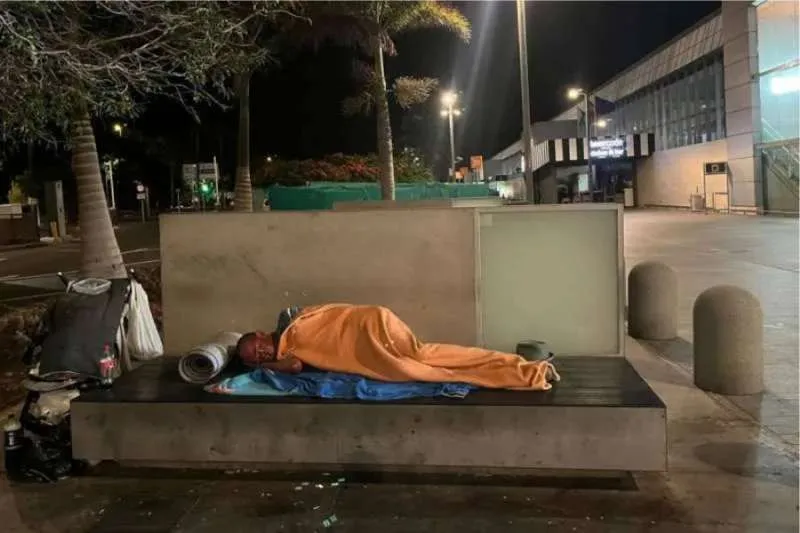30 homeless people are living in and around Tenerife South Airport
- Oasis FM
- 25-05-2025
- Local News
- Photo Credit: DA
Cáritas homeless charity, has revealed that 30 homeless people are currently living in and around Tenerife South Airport, turning terminals, parking areas and nearby spaces into makeshift shelters.
Some have reportedly been sleeping there for several years, surviving by helping passengers with luggage or relying on begging.
Speaking to Diario de Avisos, Tersi Castro, coordinator for Housing and Social Inclusion at Cáritas, described the situation as "deeply entrenched", with many cases of long-term homelessness and people battling addictions or mental health conditions. “This is not just a temporary stop for some, it’s become their way of life,” she said.
Airport as Shelter
The South Tenerife Reina Sofía Airport provides these people with basic shelter, toilet and washing facilities, and sometimes food, with a few airport workers quietly offering support.
While the airport used to remain open 24/7, recent disturbances led to it being closed from 11:00p.m. to 4:00a.m., forcing those sheltering inside to look for cover outdoors during the night.
Although the airport is a public space and authorities cannot forcibly remove people unless there’s a disruption or health hazard, security concerns and hygiene issues remain pressing.
Cáritas has been working in the area for years. In 2024, its Mobile Street Care Unit (UMAC) helped 45 people in the airport’s vicinity. Currently, they’re assisting 20 to 25 individuals directly, while another 5 to 10 have refused help.
Support includes food, clothing, transport cards, pharmacy costs, and efforts to build trust so people might eventually accept accommodation at shelters, though space is limited.
But many remain reluctant to leave the airport, where informal work and a familiar routine offer a form of survival. “Once they’ve adapted to life on the street, especially with addictions, sticking to schedules or rules in shelters becomes very difficult,” Castro said.


A Hidden Population
Most of those sheltering at the airport are men between the ages of 36 and 55. About 70% are male, and 60% are foreign nationals, mainly EU citizens who’ve lost passports or flights and can’t return home. Others are Spaniards who’ve faced job loss, relationship breakdowns, addiction, or mental health struggles.
In some cases, Cáritas supports travellers stranded without documentation or money. “We recently covered the fee for a man’s passport so he could leave,” said Castro.
Cáritas served 3,667 homeless people across Tenerife in 2024. Their research shows the highest concentrations in Santa Cruz (36.2%), Arona (12.7%), La Laguna (12%), Adeje (8%), Puerto de la Cruz (8%), and Granadilla (5.2%).
Despite efforts, Castro admits, “The system is saturated. Resources are simply not enough to meet the scale of the housing crisis we’re seeing.”
In some heartbreaking cases, people die before they can access help. “One man we were supporting at the airport recently passed away. When they finally ask for help, it’s often because they’re already in a terrible state,” Castro said.
Cáritas also handles emergency cases, such as families arriving with children and no accommodation. One recent example involved a mother and two children abandoned at the airport; social services helped place them in temporary shelter before moving them to official housing.
Ongoing Projects
Cáritas runs three main programmes:
- Base 25, focused on preventing homelessness by supporting at-risk families;
- Residential networks, including facilities for those with addiction issues;
- UMAC, the mobile outreach service that works with rough sleepers in streets, caravans or vehicles.
With homelessness in Tenerife rising, the charity continues to call for more support, coordination with social services, and above all, a humane and dignified approach to a growing crisis hidden in plain sight, even in the shadow of a busy international airport.


























